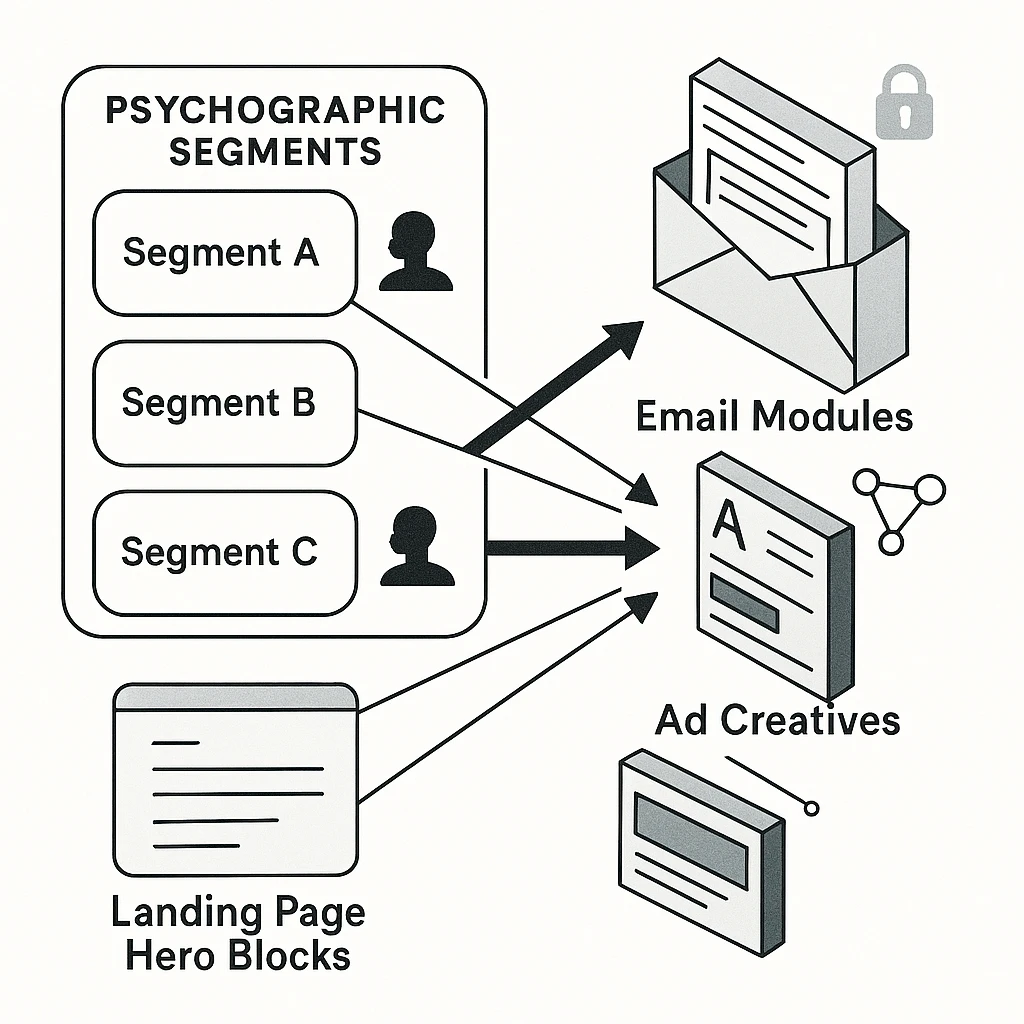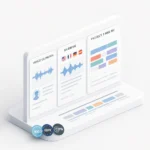Store consent and preferences at the profile level, not just per campaign.
Get the Latest Article Updates via WhatsApp
Thank you! You will receive article updates via WhatsApp.
An error occurred. Please try again.
Prefer event-based web analytics with server-side tagging.
Use Topics API for interest hints, add SDA when buying from premium publishers[2][3]
Architecture for AI-Driven Personalization

Identity, decisioning, and activation layers in a privacy-first personalization stack
Before diving into channels, align the architecture. You need a profile store that unifies identifiers, a decisioning layer that chooses content, and connectors that render on email, ads, and web.
Reference blueprint
-
Identity and profiles: hashed emails, phone, and device signals, consent state, psychographic labels.
-
Decisioning: propensity models for click and purchase, segment-to-message mapping, content ranking, and guardrails.
-
Activation: ESP for email, ad platforms for media, server-side rendering for LPs with edge personalization.
-
Measurement: event pipeline, experiments, and lift analysis with guardrails for privacy.
Creative and Message Mapping that Feels Human
Start with psychographic hypotheses, for example, “performance-driven”, “value-seeking”, “eco-conscious”. For each, write a message ladder from headline to CTA, then translate into channel atoms, subject lines, primary text, hero copy, product tiles. Validate fast with micro-tests. Psychographic definitions guide the voice, but performance and context decide the moment of delivery.[1]
Channel Playbooks
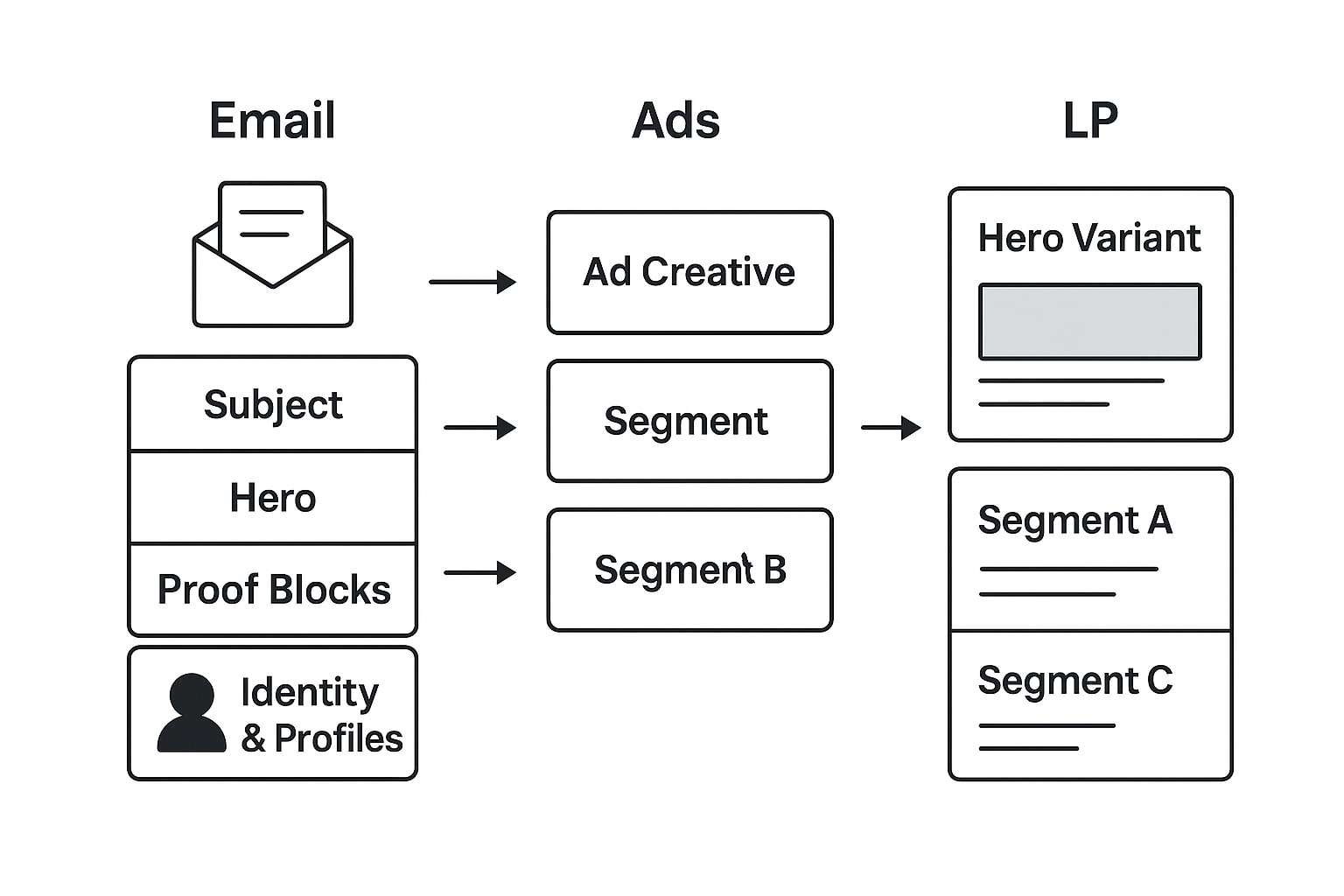
Email modules, ad storylines, and LP hero variants mapped to each segment
Email, from Inbox Placement to Incremental Lift
Three areas determine outcomes. First, deliverability, configure SPF, DKIM, and DMARC policies so signals are trustworthy.[6] Second, value density, make the first screen solve a real problem. Third, experimentation, rotate subject angles per segment and learn quickly.
Tactics that compound
-
Use journey-based sends tied to behavior, browse abandon, post-purchase replenishment.
-
Personalize modules, hero, proof, offer, and PS, not just the greeting.
-
Guard domain reputation with DMARC enforcement and feedback reports[6]
Ads, Privacy-First Targeting and Better Measurement
Pair lower-funnel first-party audiences with broader prospecting that uses Topics API and curated cohorts. On site and app, set up Enhanced Conversions so modeled bidding learns from consented, hashed events, improving attribution without exposing personal data.[5] Use incrementality testing to prove true impact and budget allocation.[8]
Tactics that compound
-
Creative diversity per psychographic angle, at least three storylines.
-
Frequency caps by segment to avoid fatigue.
-
Weekly lift reads, not just platform-reported ROAS.
Landing Pages, From First Screen to Decision
Make the first scroll carry the segment-specific promise. Mirror the ad’s language, show the proof the segment cares about, performance tests for “performance-driven”, testimonials for “risk-averse”, impact badges for “eco-conscious”. Keep forms adaptive, fewer fields for colder traffic, progressive profiling for warmer visitors.
Measurement, Experiments, and Bandits
Treat personalization as a sequence of experiments that protect learnings from bias. Use incrementality tests to separate causation from correlation.[8] When traffic is limited or variants are many, use multi-armed bandits to shift traffic toward winners automatically while still exploring.[7]
Core metrics
-
Uplift in conversion rate and revenue per session.
-
p95 time-to-value, the time until the user sees something useful.
-
Creative resonance score, interaction with the element that carries the message for that segment.
Simulated Case Study: Mid-Market D2C Skincare
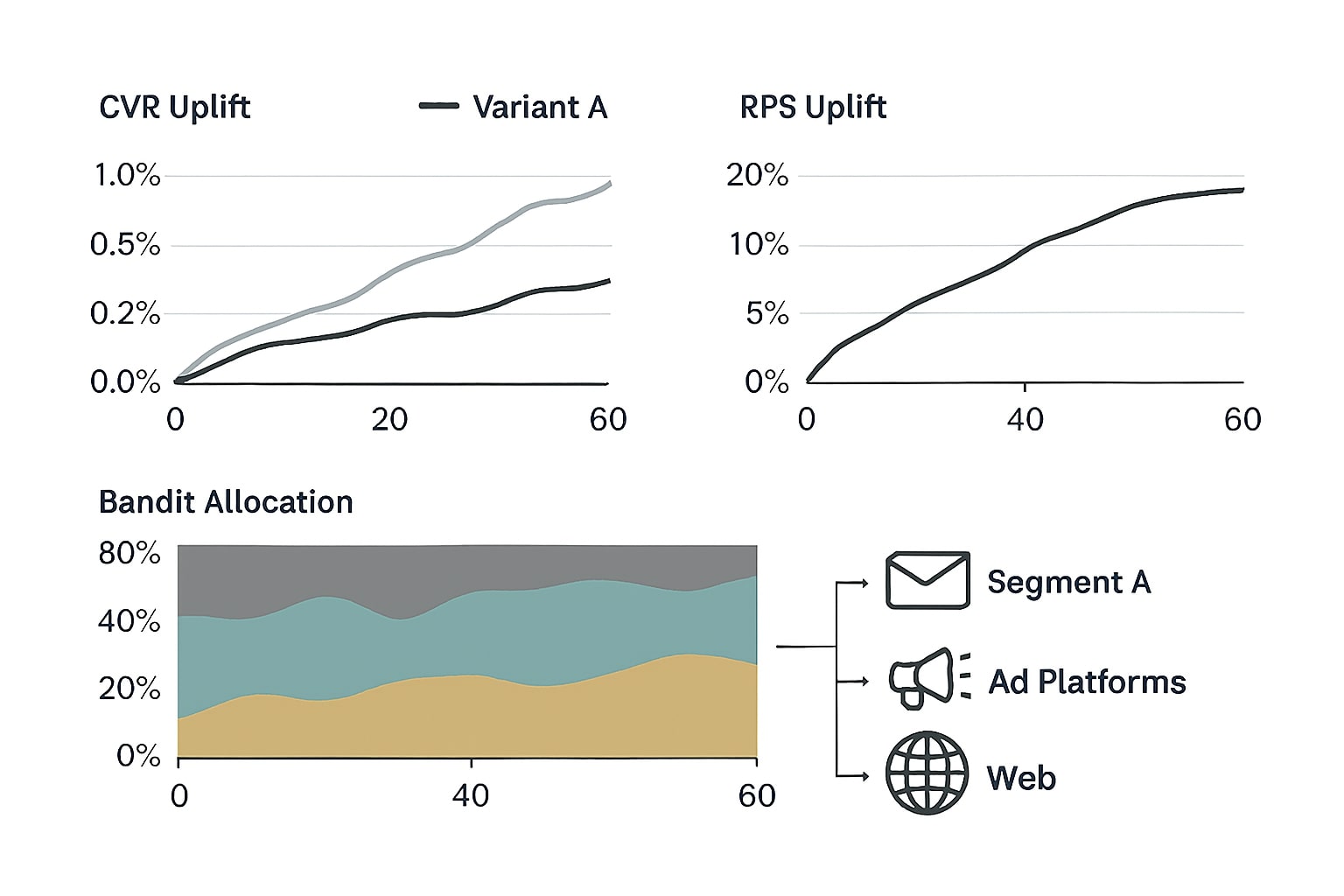
Simulated 60-day uplift and allocation trends across segments
Before diving into real-world rollouts, a controlled simulation clarifies what to expect and how to measure it. The brand here sells subscription skincare with ~100k sessions/month and a modest email list. We model three psychographic segments (“performance-driven,” “value-seeking,” “eco-conscious”), then orchestrate email, ads, and landing pages accordingly. Numbers below adalah simulasi berbasis pola industri dan praktik eksperimen yang sehat, bukan studi aktual klien.
Scenario setup (baseline, Month 0)
-
Sessions 100k/mo, CVR 2.0%, Revenue per session (RPS) $2.50, AOV $38
-
Email: OR 24%, CTR 2.5%, revenue share 18%
-
Media: mixed prospecting/retargeting; no Topics API/cohort usage; broad LP
Interventions (Days 1-60)
-
Email: SPF/DKIM + DMARC enforcement; subject, hero, and proof modules mapped per segment; 2× weekly tests
-
Ads: add Privacy Sandbox Topics API interests; buy curated publisher cohorts (formerly “Seller-Defined Audiences”); creative lines per segment
-
LP: three above-the-fold variants mirroring ad copy; progressive profiling on warm traffic
-
Measurement: 10% geo holdout for incrementality; bandit allocation on headlines
Simulated outcomes (end of Day 60)
-
CVR 2.3% (+15% rel.), RPS $2.80 (+12%)
-
Email revenue share +18% → 23%, OR +2.5pp, spam complaints stable
-
Media CPA –10%, assisted conversions +9%
-
2/3 psychographic ladders persistently win; one retired (low lift)
Note: This is a simulation; use it as a test design reference, not an absolute benchmark.
30-60-90 Day Runbook
Days 0-30, Foundation
-
Define three psychographic hypotheses and write message ladders.
-
Set up consented first-party events and server-side tagging, configure SPF, DKIM, DMARC[6].
-
Wire Topics API and request curated cohorts from key publishers[2][3].
-
Stand up two experiments, subject angles by segment, hero copy by segment.
Days 31-60, Orchestration
-
Launch bandit framework for headline and offer permutations[7].
-
Enable Enhanced Conversions on priority journeys, cart and lead[5].
-
Roll out LP variants per segment, keep above-the-fold changes simple but distinct.
-
Publish weekly lift reads and creative insights.
Days 61-90, Scale
-
Expand segments from three to five only if lift persists.
-
Layer in new proof types, UGC for community-driven segments, guarantees for risk-averse.
-
Negotiate curated audiences with top publishers and align messaging calendars[3].
-
Create a monthly “killed darlings” list, remove underperforming angles to keep the system lean.
Common Pitfalls and How to Avoid Them
Teams often personalize fragments, not experiences, the subject line says one thing while the landing page says another. Others chase micro-wins and forget to test business outcomes with incrementality. A third failure mode is ignoring deliverability hygiene and sending great messages that never reach the inbox. Anchor every decision to consent, privacy-preserving signals, and experiments that can stand up to scrutiny.[2][8]
Make Personalization a System You Can Trust
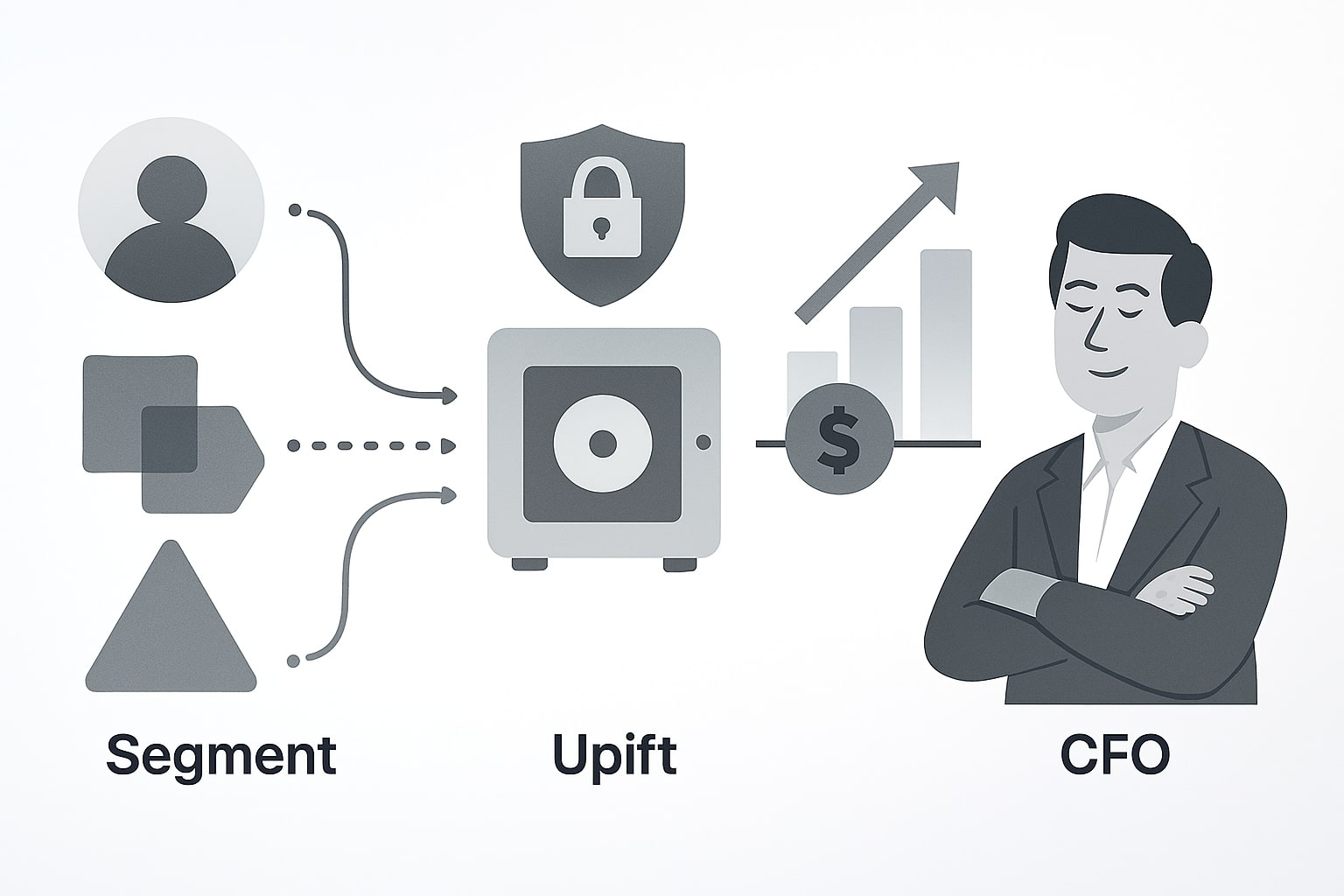
When personalization works, it feels like clarity, not creepiness. Start with three segments, wire consented data and privacy-preserving signals, and prove lift with experiments your CFO will trust.
When personalization works, it feels like clarity, not creepiness. Start with three segments, wire consented data and privacy-preserving signals, and prove lift with experiments your CFO will trust. Keep the system lean, promote winners, retire “killed darlings,” and ship value, not just variants. If you have questions or want to share your experiments, leave them in the comments, I’ll help you with suggestions relevant to your stack.
